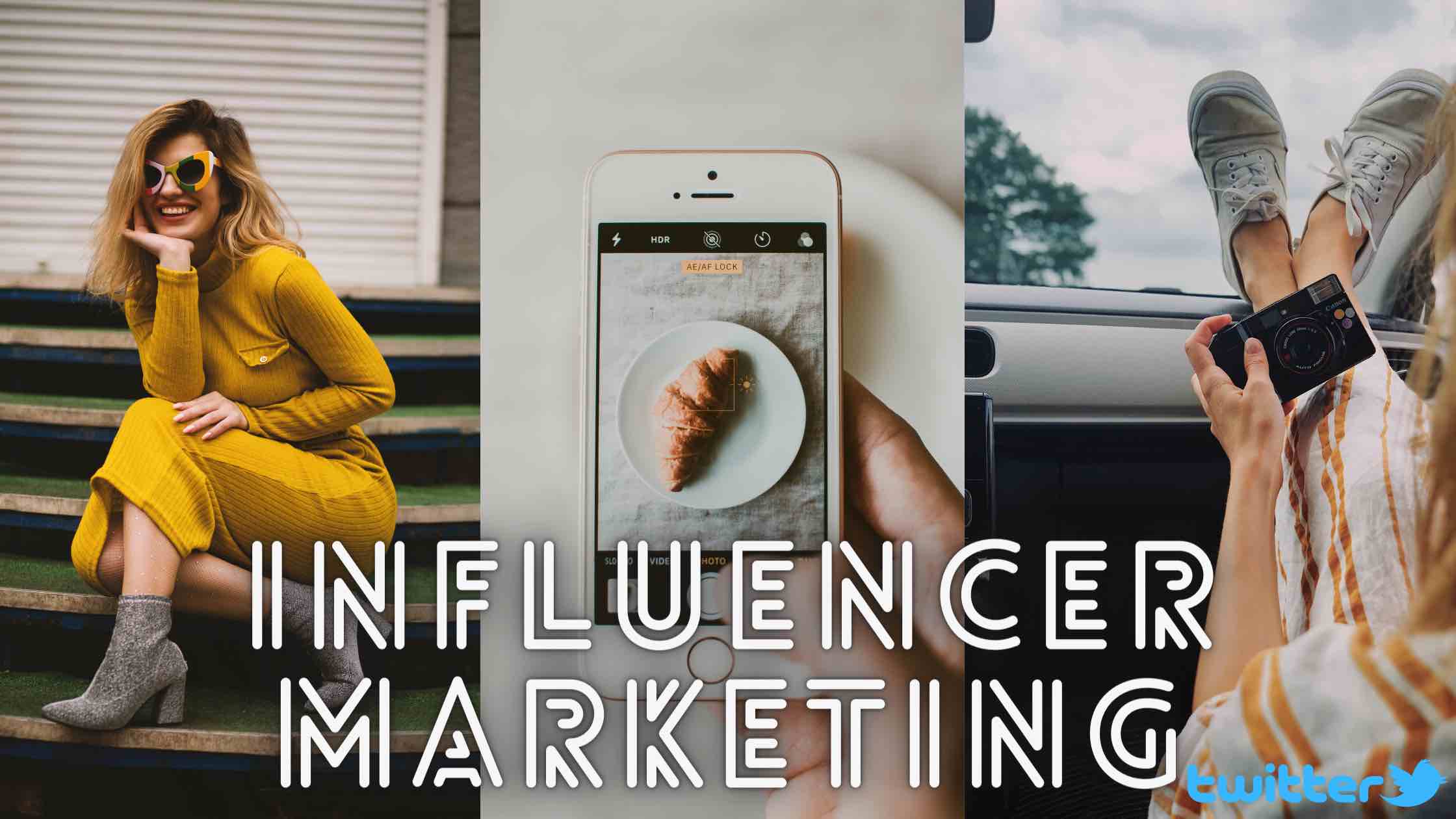Hello!
The history of influencer marketing can be traced back to the 1760s. The practice of having famous people endorse products has been a known and popular strategy employed by the biggest brands throughout the history of advertising.
Since celebrity endorsements were exorbitant, this luxury was only enjoyed by the big players. This, however, is not the case these days. With the sudden rise of social media celebrities, the game has changed completely, and while they may have a substantially smaller following, their audience has substantially more potential. A survey reveals non-celebrity influencers are 10 times more likely to drive store purchases.
 The reason behind this is simple, the consumer’s trust in word-of-mouth has not diminished in the digital age. While only 1% of millennials show trust in brand-related ads, 70% are influenced by the recommendations of other users.
The reason behind this is simple, the consumer’s trust in word-of-mouth has not diminished in the digital age. While only 1% of millennials show trust in brand-related ads, 70% are influenced by the recommendations of other users.
However, since the concept of social media itself is so young (Instagram is just 7 years old), many brands have not been able to get influencer marketing right. Do you know why? Because there are several mistakes people, marketers or companies do while running an influencer marketing campaign.
Avoid the following pitfalls to ensure success in your influencer marketing endeavors:
#1 Not choosing the right influencer
Not choosing the right influencer is by far the most common mistake brands make with their influencer marketing campaigns. Choosing an influencer involves more than just looking at the number of followers they have. In fact, the number of followers can be a highly misleading metric. At a time when businesses are selling fake followers on social media, one can never be too careful.
 For this reason, it is important to dive deep, and look at the following factors while considering an influencer:
For this reason, it is important to dive deep, and look at the following factors while considering an influencer:
● Relevance
As with any other marketing strategy, the relevance of the audience you are targeting is critical. In this case, the audience of the influencer is the audience you will be targeting. For instance, in case of a software startup, a technology influencer with 10k followers is better than a travel blogger with 30k followers.
Don’t just limit your analysis to demographics and interests, but ensure that the persona of the influencer resonates with your brand’s identity.
● Engagement
When running an influencer marketing campaign, you need to check engagement influencers get. This is a key metric. You don't want to focus on the number of followers but how engaged they are. While the reach of an influencer is an important metric, it is important to ensure that their audience also engages with their content. For instance, if an Instagram influencer has 10k followers, but their posts get less than 50 likes or comments, there is a high possibility that their audience will not be influenced by their recommendation.
● Earned Media Value
Similar to engagement, the earned media value demonstrates the level of awareness an influencer enjoys. While interactions with their audience make up a big part of the earned media value of an influencer, their relationship with other influencers also matter. If the influencer is mentioned and tagged by a lot of other people, it means that they enjoy a great media value and their opinion truly matter.
#2 Not sticking with the right one
 75% of marketers agree that selecting the right influencer is the biggest challenge they face. Just like with any other marketing medium, if the influencer has the above-mentioned qualities, connects well with your brand and delivers results, do not let them go.
75% of marketers agree that selecting the right influencer is the biggest challenge they face. Just like with any other marketing medium, if the influencer has the above-mentioned qualities, connects well with your brand and delivers results, do not let them go.
Forming long-term relationships with influencers can prove to be invaluable. Influencers can be turned into brand ambassadors.
A strong relationship with an influencer is directly translated into a strong relationship with their audience.
#3 Treating influencers like ad agencies
It is extremely important to understand that working with influencers is not a one-time transaction. Unlike ad agencies, influencers don’t create campaigns and execute them. Unlike agencies, influencers are real human beings that love creating content. Running an influencer marketing campaign is not like running an advertising campaign!
For this reason, it is important to get the influencer involved with your brand. Instead of sending them cheap samples along with a brief, it is important to deliver the complete experience. Influencers are artists, and the best artistic expressions are inspired by experiences. If the influencer genuinely loves your product and is passionate about it, the difference will be evident in the quality of content they share.
The #RevolveAroundTheWorld campaign by clothing retailer Revolve is a great example of this. Instead of simply sending the influencers free clothing, they take top fashion influencers on trips to exotic locations. This way, the influencers get great content to share while subtly promoting their sponsor. In the age of social media, stories sell, not statistics. When 63% of people remember stories, it is important to let influencers inspire action through authentic stories.
 This is also a good time to be reminded that as brands and campaigns grow, their needs also evolve. This essentially means that while building and nurturing relationships with influencers is critical, it is also important to know when to move on.
This is also a good time to be reminded that as brands and campaigns grow, their needs also evolve. This essentially means that while building and nurturing relationships with influencers is critical, it is also important to know when to move on.
In fact, many brands target a number of influencers at the same time from the very beginning, which makes it easier to shift their focus if and when it is necessary. For instance, in the Buick’s Pinboard to Dashboard campaign, they worked with ten different influencers simultaneously, each with their own set of unique audience. The campaign was a great success and directed over 17 million unique users to their social media pages and blogs.
#4 Failure to monitor or control content
While it is important to give the influencers creative freedom, it is also important to ensure whoever is responsible for promoting your brand does it properly. Tracking and monitoring the content created by the influencers you work with is essential to run successful influencer marketing campaigns.
To ensure that the influencer you choose is on the same page, make sure you share the following things with them at the very beginning:
● A list of clearly-defined deliverables.
 This includes a defined post frequency, the kind of content that will be shared, and the important dates on which the content needs to be shared.
This includes a defined post frequency, the kind of content that will be shared, and the important dates on which the content needs to be shared.
● Expectations from the campaign.
Clearly defined KPIs will help avoid disappointment and confusion down the line. Moreover, clearly defining goals will also help you measure the precise effectiveness of the campaign or partnership. Make sure you have those KPIs ready and the influencer(s) you work with understand them. It's crucial to define metrics while running an influencer marketing campaign.
● Key messages and terms related to the campaign.
If you are going to give someone the right to talk about your brand in front of the masses, making sure the right message is being delivered is critical to success. This also includes giving the influencer any campaign or brand-related hashtags or URLs that will be included in their posts.
 ● Clearly defined call to actions
● Clearly defined call to actions
Just like with any other campaign, you need to clearly define what action you need your audience to perform. Not only should this call to action (CTA) be included in their posts, but ask the influencer to include the CTA in their bio as well.
All this being said, it is important to remember that influencers are artists that dislike restrictions. Don’t try to micro-manage them and scrutinize everything they post. Remember, an influencer knows best what their audience likes.
#5 Keeping up with guidelines
 Different consumer protection organizations have started monitoring influencer promotions. In fact, some like the FTC (Federal Trade Commission) of The USA have published guidelines that require influencers to clearly label sponsored posts.
Different consumer protection organizations have started monitoring influencer promotions. In fact, some like the FTC (Federal Trade Commission) of The USA have published guidelines that require influencers to clearly label sponsored posts.
Failure to clearly disclose sponsored posts can not only attract penalties, it can be damaging to your brand image, as well as to the relationship an influencer might have with their audience. For this reason, making clear disclosure should be a priority from the beginning. Clearly instruct the influencer to include a nice hashtag to ensure everyone knows that the post is sponsored.
So, how to run a successful influencer marketing campaign?
Influencer marketing is a great channel to grow your business. As mentioned earlier, influencer marketing has recently become popular, and it is understandable that brands are hesitant about investing in it. However, not doing influencer marketing at all might be the biggest pitfall that you need to avoid.
This marketing medium allows small brands to become visible to niche audiences with substantial numbers without serious repercussions. By simply avoiding the pitfalls mentioned in this post and regularly tracking progress, achieving success with influencer marketing is easier than ever. I also recommend to following those 8 steps when running an influencer marketing campaign.
So, working with influencers can be very beneficial for your business. But, at Growth Hackers, we recommend you to go even further than just working with influencers: we suggest you become an influencer. Indeed, by becoming a thought leader in your industry, you will get all the benefits from influencer marketing without the costs.
I know what you're going to tell me: "Becoming an influencer or a thought leader in your niche is time-consuming and very difficult". You're wrong, it's not as hard as it seems. And this is why we came up with this guide on how to become an influencer in your industry in 10 easy steps.
- Top 7 Ways to Becoming a Seven-Figure Influencer in Your Niche
- Top Goldman Sachs Stock Researcher Warns AI Bubble May Be About to Explode
- How to Find the Right Balance Between Growth and Brand Marketing
Thank you!
Subscribe to our newsletter! Join us on social networks!
See you!






